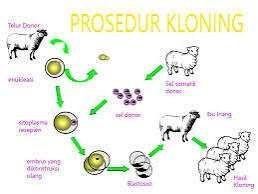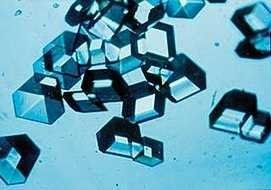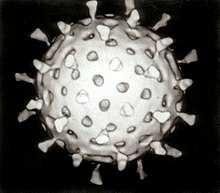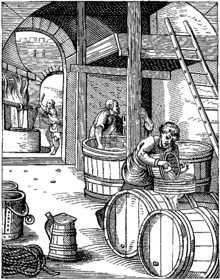Biotechnology and chemical processes in direct animal parts: at Unsyiah Malaysia University in 1987

Biotechnology: is a branch of science that studies the utilization of living things (bacteria, fungi, viruses, etc.) as well as products of living things (enzymes, alcohols) in the production process to produce goods and services. Today, the development of biotechnology is not only based on biological science, but also on other applied and pure sciences, such as biochemistry, computers, molecular biology, microbiology, genetics, chemistry, mathematics, etc. In other words, biotechnology is an applied science that combines different branches of science in the process of producing goods and services.
Biotechnology is only known to humans since thousands of years ago. For example, in the field of food technology are brewing, bread and cheese that have been known since the 19th century, plant breeding to produce new varieties in agriculture, as well as breeding and reproduction of animals. In the medical field, the application of biotechnology in the past proved, among other things, with the discovery of vaccines, antibiotics, and insulin, although still in limited numbers due to fermentation process is not perfect. Significant changes occurred after the discovery of bioreactors by Louis Pasteur. With this tool, the production of antibiotics and vaccines can be done in bulk.

At this time, biotechnology is growing very rapidly, especially in developed countries. This progress is characterized by the discovery of various technologies such as genetic engineering, tissue culture, recombinant DNA, stem cell proliferation, cloning, etc. [3] This technology enables us to gain the healing of both incurable and genetic diseases such as cancer or AIDS. [4] Research in the field of stem cell development also allows stroke patients or other diseases resulting in loss or damage to body tissues to heal once in a while. [4] In the field of food, using genetic engineering technology, tissue culture and recombinant DNA, plants can be produced with superior properties and products because they contain more nutrients than ordinary plants, as well as more resistant to pests and environmental stress. [5] Application of biotechnology at this time can also be found in the environmental conservation of pollution. For example, on the decomposition of petroleum spilled into the sea by bacteria, and the decomposition of toxic substances (toxins) in rivers or seas using new types of bacteria
Progress in the field of biotechnology is inseparable from the various controversy surrounding the development in the period to the technological. For example, cloning technology and genetic engineering on food crops have come under fire from various classes
Biotechnology generally means improving the quality of an organism through the application of technology. The application of such technology may modify the biological function of an organism by adding genes from other organisms or genetically engineering the organisms in living cell processes to proliferate in animals and plants in the process directly.
Changes in biological properties through genetic engineering lead to the "birth of new organisms" of biotechnology products with properties favorable to humans. Biotechnology products, among others, are created by humans to develop a biotechnology mind and others.
Corn resistant insect pests
Insect resistant pest cotton
Papaya is virus-resistant

Viruses are microscopic parasites that infect cells of biological organisms. This virus is a mandatory parasite, it is because the virus can only reproduce in living material by attacking and exploiting living cells because the virus does not have cellular equipment to reproduce itself. Viruses usually contain small amounts of nucleic acids (DNA or RNA, but not a combination of both) encased in a type of protective material composed of proteins, lipids, glycoproteins, or a combination of all three. The viral genome will be expressed into both proteins used to load the genetic material and proteins needed in its life cycle.
The term virus usually refers to particles that infect eukaryotic cells (multicellular organisms and many types of single cell organisms), whereas the term bacteriophage or phage is used for strains that attack prokaryotic cell types (bacteria and other non-nucleating organisms).
Viruses are often debated as living beings because they can not perform their biological functions freely if they are not in a host cell. Due to its distinctive characteristics, the virus is always associated with certain diseases, both in humans (eg influenza and HIV viruses), animals (eg avian influenza viruses), or plants (eg tobacco mosaic virus / TMV).
- Enzyme boosts milk production in cows
- Rice contains vitamin A to consume on the human side
- Bananas contain hepatitis vaccine, to strengthen the heart and iron parts of the human body.
Timeline of biotechnology

8000 BC Collection of seeds for replanting. Evidence that the Babylonians, Egyptians, and Romans practiced selective breeding (artificial selection) to improve the quality of livestock.
6000 BC Brewing, fermenting, making bread, making tempe with the help of yeast.
4000 BC Tionghoa make yogurt and cheese with lactic acid bacteria.
1500 Collection of plants around the world.
1665 Cell discovery by Robert Hooke (England) through a microscope. [6]
1800 Nikolai I. Vavilov creates comprehensive research on animal breeding.
Biotechnology has several types or branches of science that some of them are associated with color and various phariation on biochemical lovers, namely:

Red biotechnology is a branch of biotechnology studying biotechnology applications in the medical field. [10] Its coverage covers the entire spectrum of human medicine, ranging from preventive, diagnosis, and treatment. Examples of its application are the use of organisms to produce drugs and vaccines, the use of stem cells for regenerative medicine, and gene therapy to treat genetic diseases by inserting or replacing abnormal genes with normal genes
White/gray biotechnology is: biotechnology applied in industries such as the development and production of new compounds as well as other breweries and renewable energy sources. By manipulating microorganisms or like bacteria and khamiratauragi, better enzymes and organisms have been created to facilitate the process of producing and processing industrial waste. Bleaching of oils and minerals from the ground to increase mining efficiency, and brewing with yeasts.
Green biotechnology studies biotechnology applications in agriculture and livestock. [10] In agriculture, biotechnology has been instrumental in producing pest resistant crops, nutritional food with higher nutrients and plants that produce useful drugs or compounds. Meanwhile, in the field of animal husbandry, animals have been used as "bioreactors" to produce important products such as goats, cattle, sheep, and chickens have been used as producers of protective antibodies that help body cells recognize and fight foreign compounds (antigens).
Blue biotechnology is also called aquatic biotechnology or aquatic organisms that control the processes occurring in the aquatic environment. One of the oldest examples is aquaculture, cultivating finned fish or shellfish in controlled conditions as a food source, (an estimated 30% of fish consumed worldwide are produced by aquaculture). The development of aquatic biotechnology includes genetic engineering to produce disease-resistant oysters and vaccines against viruses that attack salmon and other fish. Another example is transgenic salmon that has excessive growth hormone resulting in very high growth rates in a short time.
The emergence of commercialized genetically modified crops has provided economic benefits to farmers in many countries, but has also been a source of controversy. This has emerged since the beginning of its presence, its first test field destroyed by anti-GMO activists. Although there is a scientific consensus that food derived from transgenic crops poses no greater risk to human health than conventional food, GM food security remains central to criticism. Gene flow, impact on non-target organisms, control of food supply and intellectual property rights are also being debated. The existence of this problem resulted in the development of a regulatory framework, which began in 1975. Its international agreement was also agreed in 2000, the Cartagena Protocol on Biosafety. Each country has developed its own regulatory system on GMOs, marked by the differences between the United States and Europe.
Stem Cells
Stem cells are a special type of cell with the ability to reshape itself and at the same time form a specialized cell. Therapeutic Applications of Embrionic Stem Cells in Various Degenerative Diseases. In the Mirror of the World of Medicine, although most cells in the body such as heart or liver have been specially formed to fulfill certain functions, the stem cells always remain undifferentiated until there are certain signals leading them differentiate into specific types of cells. Its ability to proliferate together with its ability to differentiate into this particular cell type makes it unique. Biological characteristics and stem cell differentiation focus on mesenchymal stem cells. Mirror World Medicine.
Bioremediation:
is the use of microorganisms to reduce pollutants in the environment. When bioremediation occurs, enzymes produced by microorganisms modify toxic pollutants by altering the chemical structure of pollutants. This event is called biotransformation. In many cases, biotransformation leads to biodegradation, when toxic pollutants are degraded, their structures become uncomplicated, and eventually become non-hazardous and non-toxic metabolites.
Since the 1900s, people have used microorganisms to treat water in waterways. Currently, bioremediation has grown in the treatment of hazardous waste (chemical compounds that are difficult to degrade), which are usually associated with industrial activities. Included in these pollutants include heavy metals (mercury, strontium, cadmium), petroleum hydrocarbons, and halogenated organic compounds such as pesticides, herbicides, CFCs, and others. Many new applications use microorganisms to reduce the pollutants being tested. The current field of bioremediation has been supported by better knowledge of how pollutants can be degraded by microorganisms, identification of new and beneficial types of microbes, and the ability to increase bioremediation through genetic technology. Molecular genetic technology is essential for identifying genes that encode enzymes associated with bioremediation. The characterization of the genes in question can improve our understanding of how microbes modify toxic pollutants to be harmless.
The recombinant strains or types of microbes that are created in the laboratory can be more efficient at reducing pollutants. Recombinant microorganisms created and first patented are "oil-eating" bacteria. These bacteria can oxidize hydrocarbon compounds commonly found in petroleum. The bacteria grow faster when compared to other types of bacteria that are natural or not created in laboratories that have been tested. However, the invention has not been successfully commercialized since this recombinant strain can only break down the hazardous component with a limited amount. This strain has not been able to degrade the heavier molecular components that tend to survive in the environment.
UPVOTE FOLLOW RESTEEM
@petrixsteem
